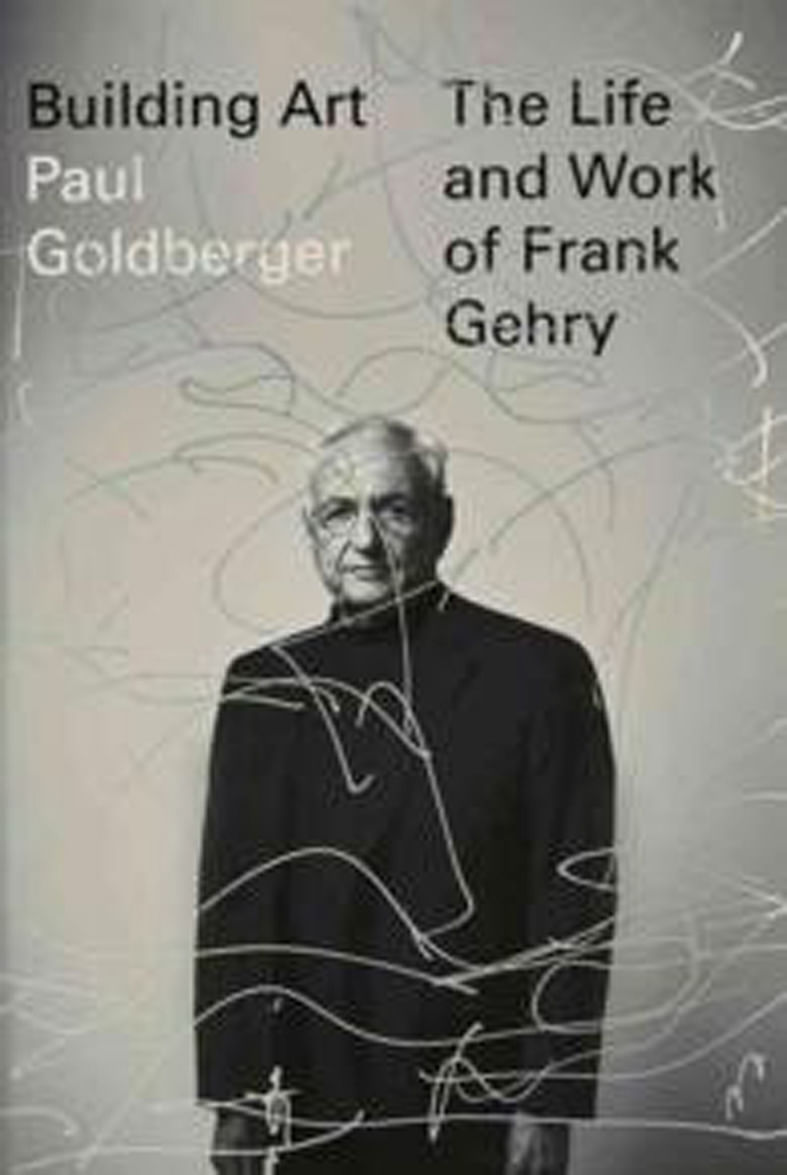Even if you cannot name a building by architect Frank Gehry, you will know it when you see it: Gehry's is the structure whose panoply of lines piles up against one another, with angles so improbable as to look barely functional.
His style is bright, dynamic and as subtle as a police siren.
This instantly recognisable aesthetic has helped make him arguably the most famous architect in the world.
His name is a brand in itself: There was a Frank Gehry line of jewellery at Tiffany's, a Frank Gehry furniture line from Knoll and a Frank Gehry handbag from Louis Vuitton.

His level of celebrity transcends architecture, derived instead from the perception that he is simply an artistic genius. In a 1997 New York Times review, architecture critic Herbert Muschamp wrote that Gehry "changed an art form and in the process is changing a culture".
That was 18 years ago. His reputation continues to grow.
Where does this genius come from? Was it always there - simmering below the surface, a universal truth waiting for the opportunity to be recognised by an adoring public? This was what architecture critic Paul Goldberger set out to discover in creating his biography of Gehry, Building Art: The Life And Work Of Frank Gehry, which arrived in book stores on Sept 15.
In Goldberger's excellent and comprehensive treatment, Gehry does not come across as a genius at all.
He is depicted as a very talented man who worked very hard for a very long time, learning only gradually how to design the buildings that would make him famous.
The narrative is not very sexy, but it is undeniably fascinating.
Mirroring the rise of contemporary architecture, Gehry emerges from the constraints of mid- century modernism, grapples with questions of urban development and human scale and comes increasingly to rely on hyper- sophisticated, proprietary computer software.
This is not to say that Goldberger, an explicit, perhaps relentless admirer of Gehry, ever denigrates Gehry or his early buildings. In this book, Gehry can do no wrong. There is always something to compliment.
An innocuous, vaguely modernist house Gehry built in 1958 in Brentwood, Los Angeles, has "a tight, formal elegance".
In a white stucco, six-unit apartment house in Santa Monica, California, Goldberger finds "a subtly asymmetrical arrangement of solids and voids", even though the voids, in this case, are recessed doors on an unremarkable balcony.
The banality of Gehry's early buildings is partially because he needed work and took it wherever he could get it. He grew up poor, as the reader is repeatedly reminded over the course of the first 100 pages of the book.
Only in the mid-1960s, when he built a house/studio for graphic designer Lou Danziger, did a unique architectural vision begin to emerge. The structure, Goldberger writes, was "two oblong boxes, set parallel but one offset from the other, positioned as carefully as pieces of minimalist sculpture".
The next notable building came three years later, when Gehry designed a hay barn for a friend's ranch. The building, comprising telephone poles-cum-columns and corrugated metal, is striking; its roof is an angled, asymmetrical, sloping trapezoid.
Several nice but not noticeable buildings followed, such as a clean, modernist house with corrugated walls from 1972.
He also found time to design a line of corrugated cardboard furniture, Easy Edges, which Gehry disavowed when it became too successful and threatened to drag him away from his core architecture business.
Then, in 1978, he designed his own house, which has been a tourist attraction ever since. It started as a modest Dutch-colonial in Santa Monica, at which point Gehry set about chopping it up. He added jutting glass pockets, an exposed wood frame and a corrugated metal wall that some neighbours confused with a construction fence.
By the 1980s, he enjoyed a certain level of fame.
In 1984, the Walker Art Center in Minneapolis held an exhibition called the Architecture Of Frank Gehry, which eventually travelled to the Whitney Museum in New York.
He won the Architecture Prize, the profession's most prestigious award, in 1989. He was beginning to make money.
Offering a dramatic insight as to the costs Gehry's buildings have entailed, Goldberger tells the story of when billionaire Peter Lewis, chairman of Progressive Insurance, commissioned a house from Gehry in the Cleveland suburbs.
Lewis gave him a budget of US$5 million and carte blanche. The compound grew and grew, with Lewis' blessing. Its budget had risen to roughly US$82.5 million by the time the project was scuttled.
By the early 1990s, Gehry was also beginning to use computer software to model his buildings, which played a key role in the submission of his design for the Guggenheim Bilbao.
Unsurprisingly, this is also when the buildings became identifiably Gehry- esque-curving, disjointed shapes piled into an unlikely building - simply because they would have been impossible to engineer before the computer age.
Gehry's software helped "design the structural framework, calculating the structural stresses at each point of the building and determining the most economical way to construct the curving forms", Goldberger explains.
And because of the software, Gehry managed to keep costs under control, coming in below the museum's US$100-million budget.
The success of the Guggenheim Bilbao put Gehry on the map permanently and his aesthetic has remained almost entirely unchained in the subsequent 20 years.
That is partially a result of client demands. If you shell out for a Frank Gehry building, you can be forgiven for wanting it to look like one.
It is also because, to a remarkable extent, Gehry seems to have found a language of his own, which he could finally and fully articulate.
To be sure, he is lucky to have reached this point, but that is hardly the same thing as genius. It is just hard work.
BLOOMBERG
• Building Art: The Life And Work Of Frank Gehry ($55.89) is available at Books Kinokuniya.



